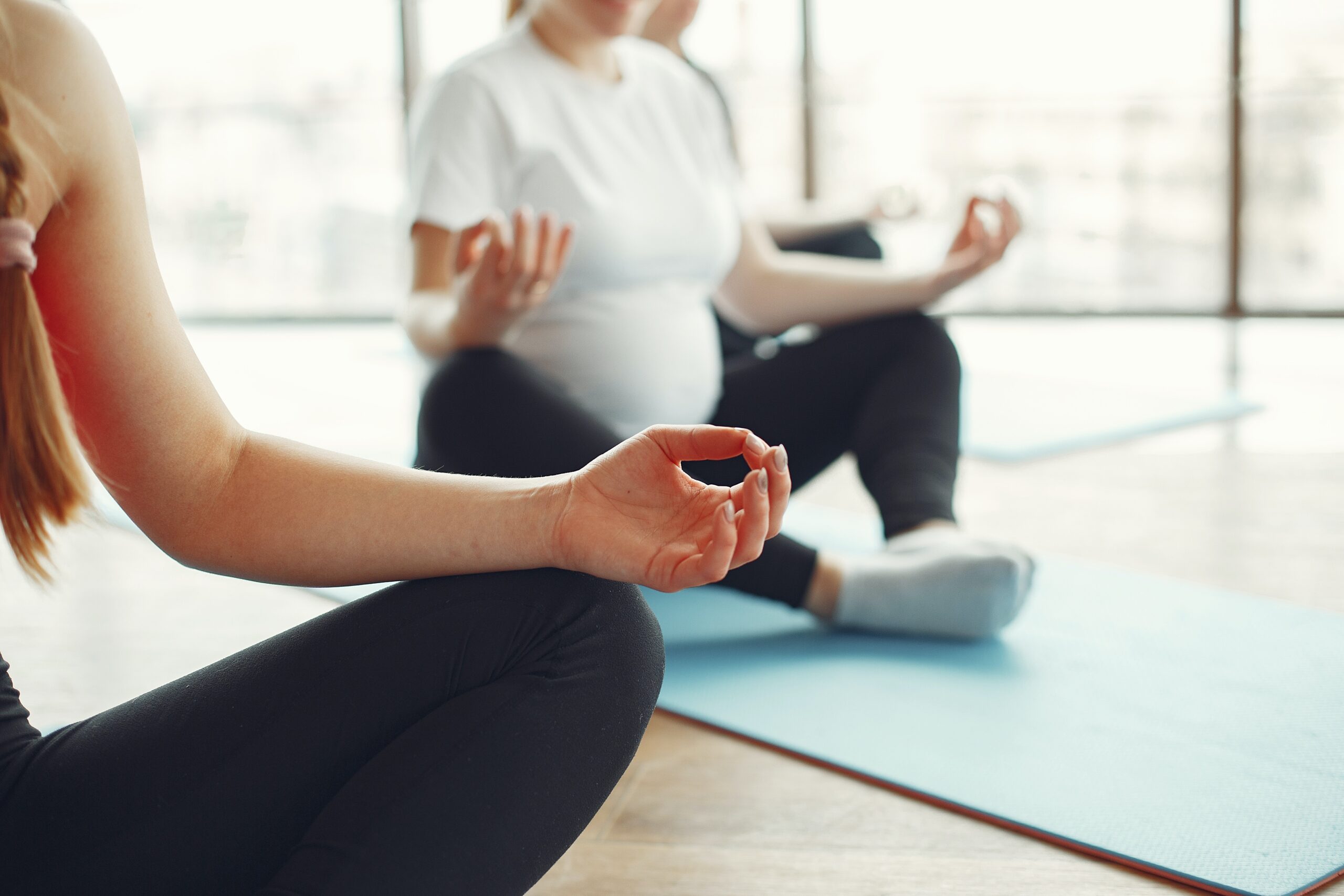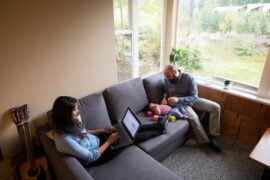Whether you have diagnosed anxiety or are simply feeling overwhelmed, studies show that introducing yoga into your routine can alleviate anxiety, panic and stress.
When we perceive a danger or threat, our bodies fight or flight response is triggered, this is an evolutionary response to keep us safe from harm. But for people with an anxiety disorder, this response is triggered consistently and often when no threat is present. The fight or flight response manifests in physical and psychological responses ranging from increased heart rates and rapid breathing to intrusive thoughts such as believing that you are having a heart attack.
Alongside therapy and, in more severe cases, medication, yoga has been found to assist in managing the bodies response to feeling anxious. Practising yoga helps our body transition from an active sympathetic nervous system to our resting parasympathetic nervous system, allowing our bodies to heal and our mental state to restore to equilibrium. When we practice yoga instead of being asked to rationalise our thoughts, we learn to regulate and build resilience to stress.
Yoga is Sanskrit for ‘yoke’ or ‘union’ and focuses on physical, mental and spiritual disciplines that originated in ancient India for stilling the mind. The principal ambition in any yoga practice is to attain ‘moksha’, meaning liberation or freedom, to disentangle ourselves from whatever is stopping us from feeling open.
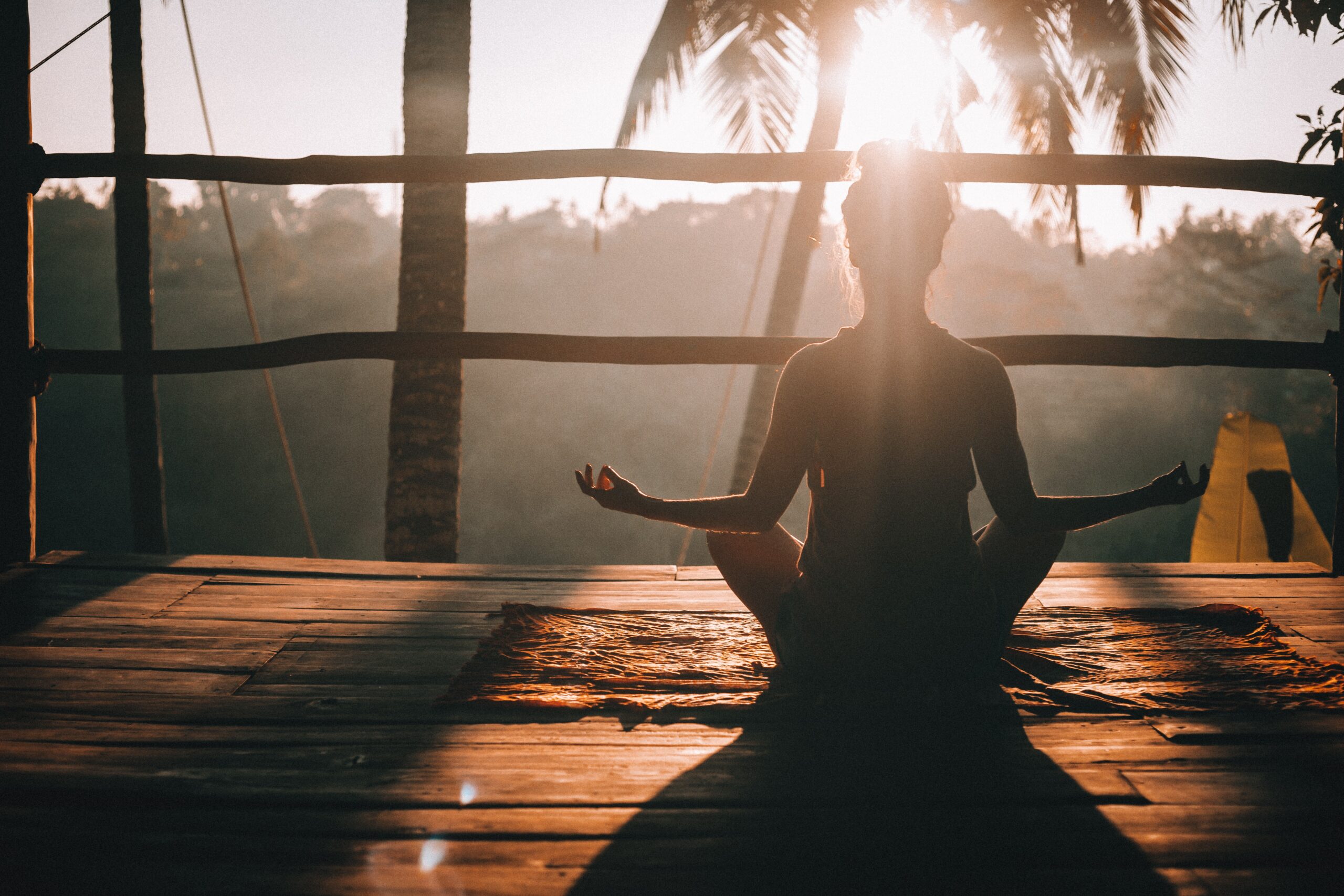
1. Activate your relaxation response
The relaxation response aims to counteract the bodies sympathetic fight or flight nervous system and move into the rest and digestion of the parasympathetic nervous system. By slowing down our breathing, releasing tension in our body and lowering our blood pressure, we allow the body to come out of toxic stress and into a state of equilibrium.
According to Harvard physician Herbert Benson, this response is not triggered by napping or resting on the couch. Instead, it involves active mindfulness to achieve a calm physical state and an energised mind.
Yogic sequences that involve stretching, lengthening, and breathwork aid the relaxation response as focus turns to slow, deliberate movement allowing the mind to calm, thoughts to melt away, bringing you back into your body and your breath.
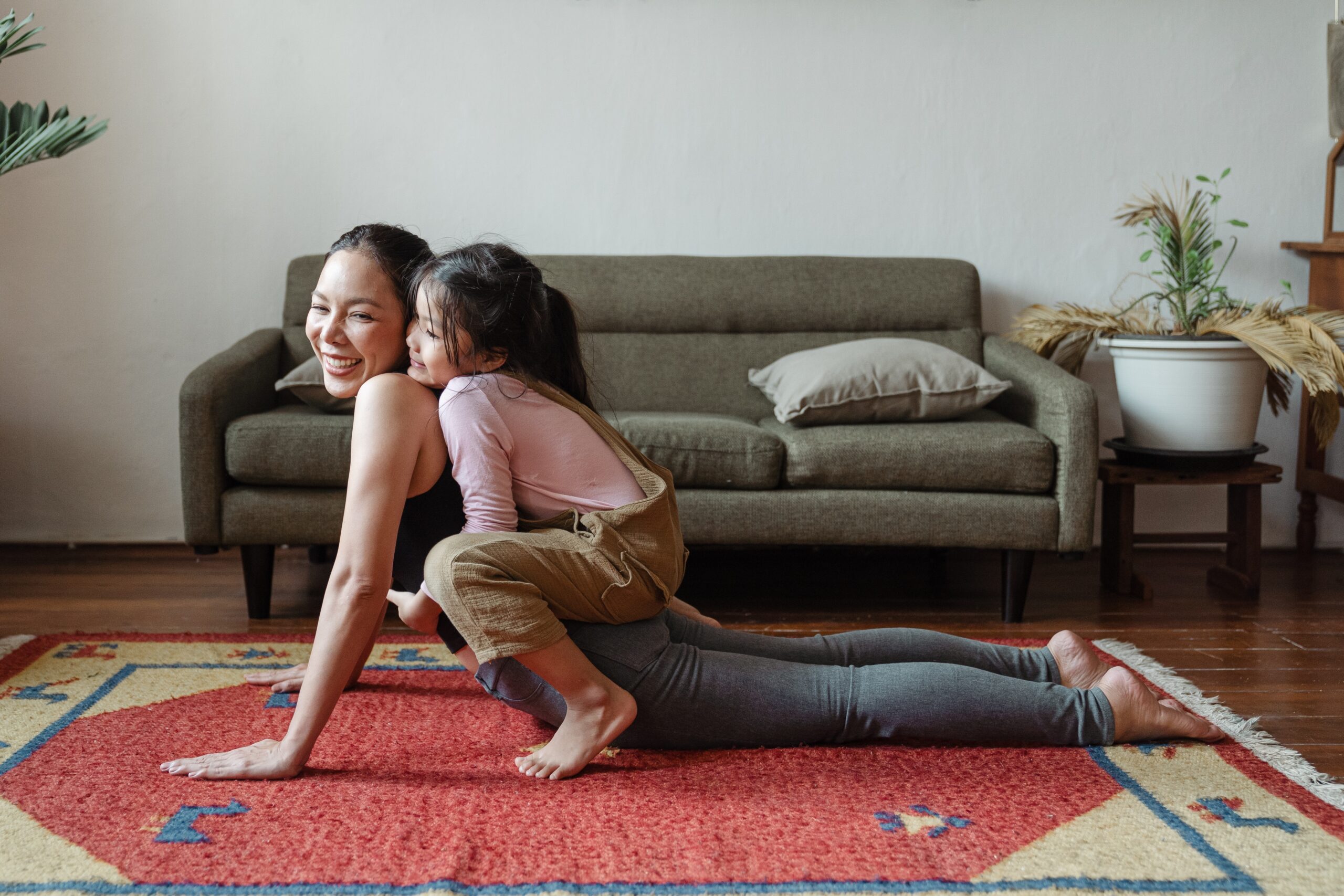
2. Focus on breathwork
When we feel anxious, our breathing often accelerates and becomes shallower, this often leads to a sensation of being out of breath or unable to breathe fully.
Yoga promotes deep and slow breathing that fills our belly (not just our chest!) matched with long, full exhales. Learning to breathe mindfully and slowly is a habit or skill you can practice on your mat, in your car, or as you fall asleep.
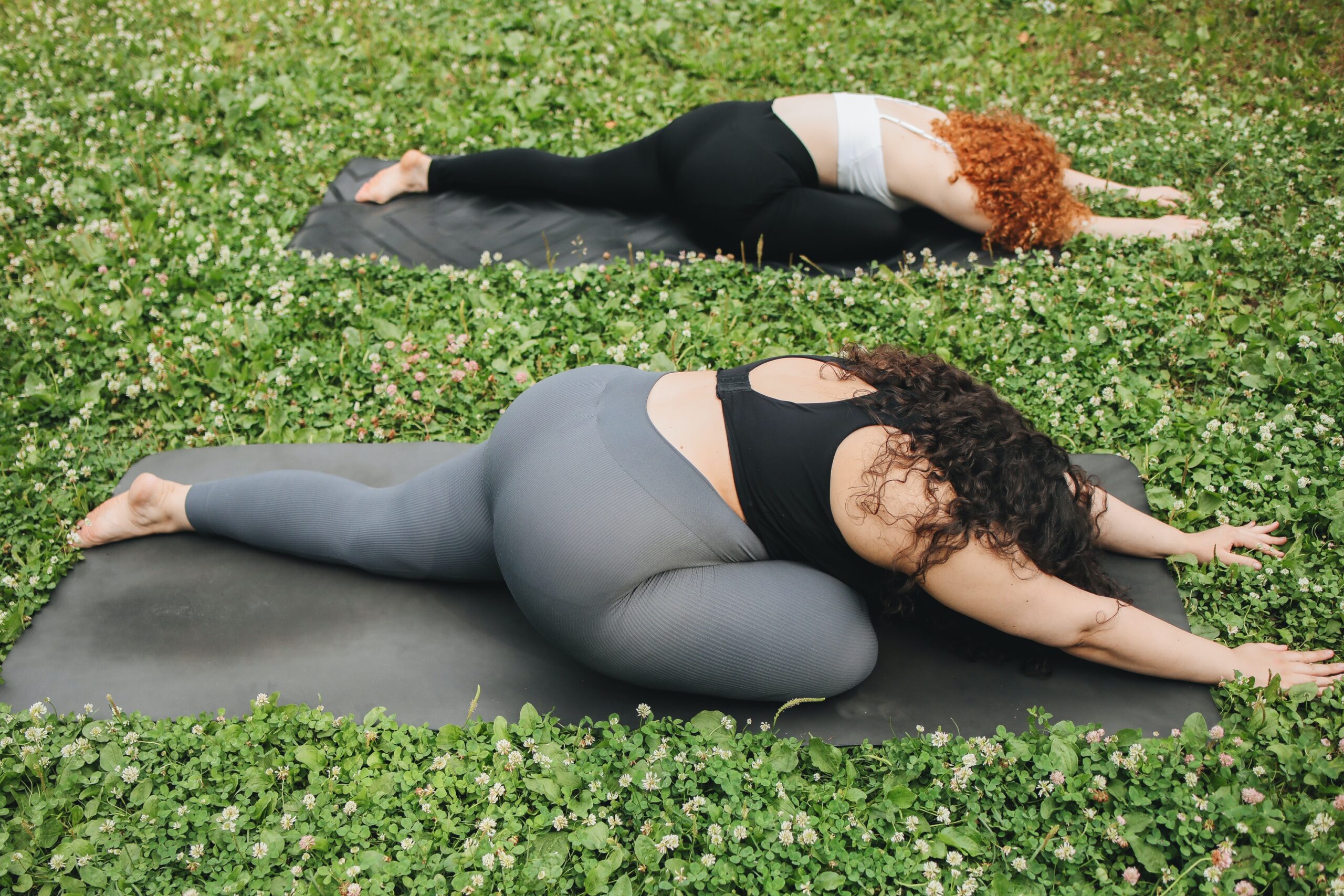
3. Build patience and understanding
A core idea in practising yoga is to ‘meet yourself on the mat, ‘ meaning to bring understanding and tenderness to your mind and body as you begin your flow. This understanding comes from noticing how your body is feeling and modifying it to suit your needs on the day.
Being compassionate with yourself as you come to the mat extends to allowing yourself to feel and experience whatever emotions arise throughout your practice, allowing them to pass.
In conjunction with breathwork, these principles help build habits that allow us to better understand our anxiety by acknowledging discomfort and tension, letting thoughts pass and coming back to our breath.
4. Form good habits
Frequently practising yoga encourages self-awareness and can create lasting change. As we get to know ourselves better, we may notice we regain agency of our physical, emotional and mental wellbeing.
As we begin to witness ourselves through mindful observation of daily habits, we invite ourselves to identify positive habits and those that we may choose to change over time.
Building a daily or weekly nourishing and enjoyable practice has multiple health benefits and encourages taking time just for ourselves, to step away from any commitments and stressors to meet ourselves on the mat for rest and re-energisation.
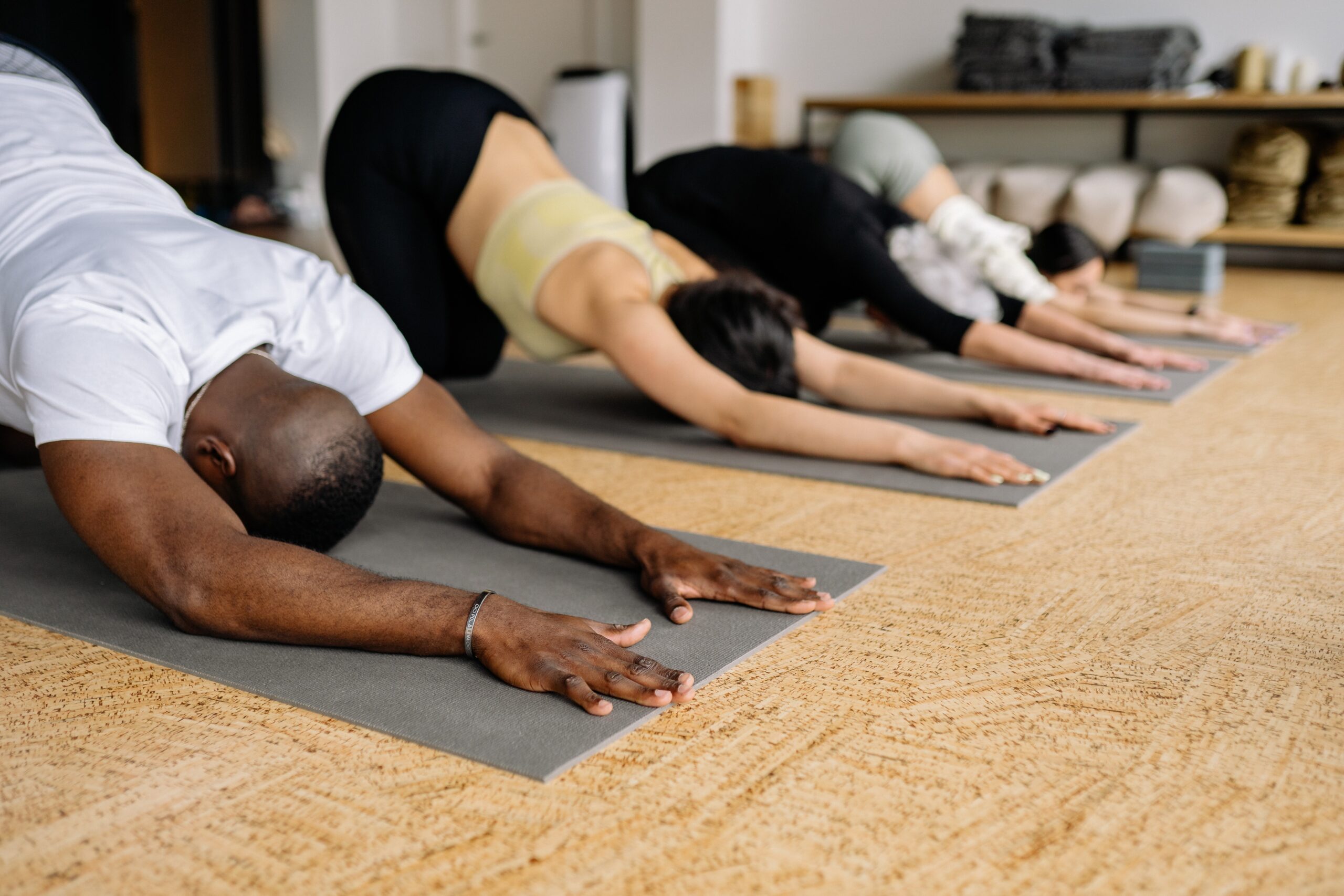
5. Build community
We may also find community in our practice. Yoga is safe, fun and widely available. We can practise it in the comfort of our own homes through free YouTube videos or at a local studio. Finding like-minded individuals can help combat feelings of detachment, fear, and the isolation of a busy mind. Opening ourselves up promotes an ability to hold space for those around us.
A practice in self-awareness
From Rina Deshpande, yoga and mindfulness teacher, Harvard academic and artist:
As you are reading this, observe yourself as you are now.
What is your posture like? How are you sitting or standing? Is your posture supported? Are you feeling any discomfort? Are you contorted, tight, slouched? Are your legs crossed, is your neck craning toward a device? Come back to your body and observe.
Now pay attention to your breathing? Is it short and shallow? Does it feel deep and free-flowing, or are you holding it? Is your jaw clenched? Are you holding tension in your face?
Try to take nice, long, deep breaths – in through your nose, filling your lungs and then your belly – hold. Then release, slowly and control through your mouth until you feel empty. Repeat.
Does your posture shift? If not, find yourself in a more comfortable and elongated position if possible. You can repeat this exercise anywhere when you are feeling tense, uncomfortable, agitated or anxious.
Start small, and build your way up
Incorporating small and simple exercises like the one above can help you move toward more extended and more challenging practice to support physical, mental, and emotional wellbeing.
Building self-awareness through yoga enables us to ‘catch ourselves’ when we slouch, or our mind wanders toward anxious thoughts. As we become self-aware, we may meet these observations with a small shift in behaviour. Over time, these changes may become habits that involve restful breathing, better posture and compassionate thinking.


